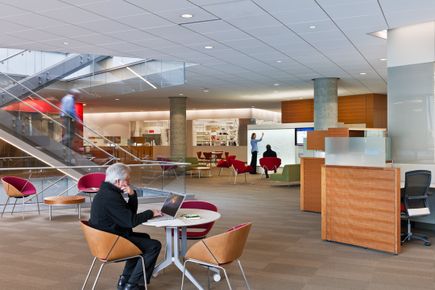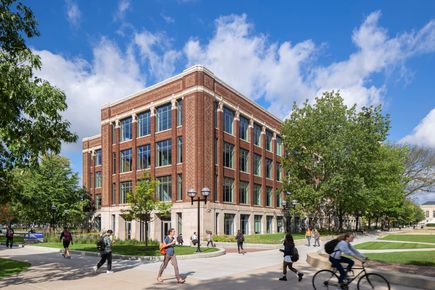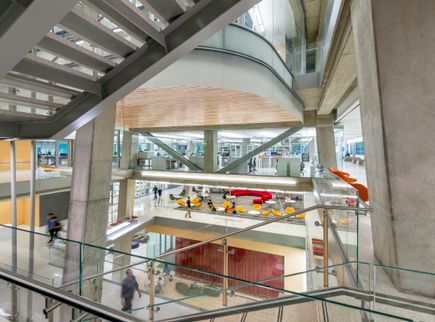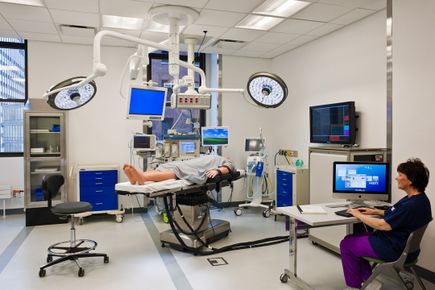Programming and Planning Options: Strategies for Collaborative STEM Buildings
Share
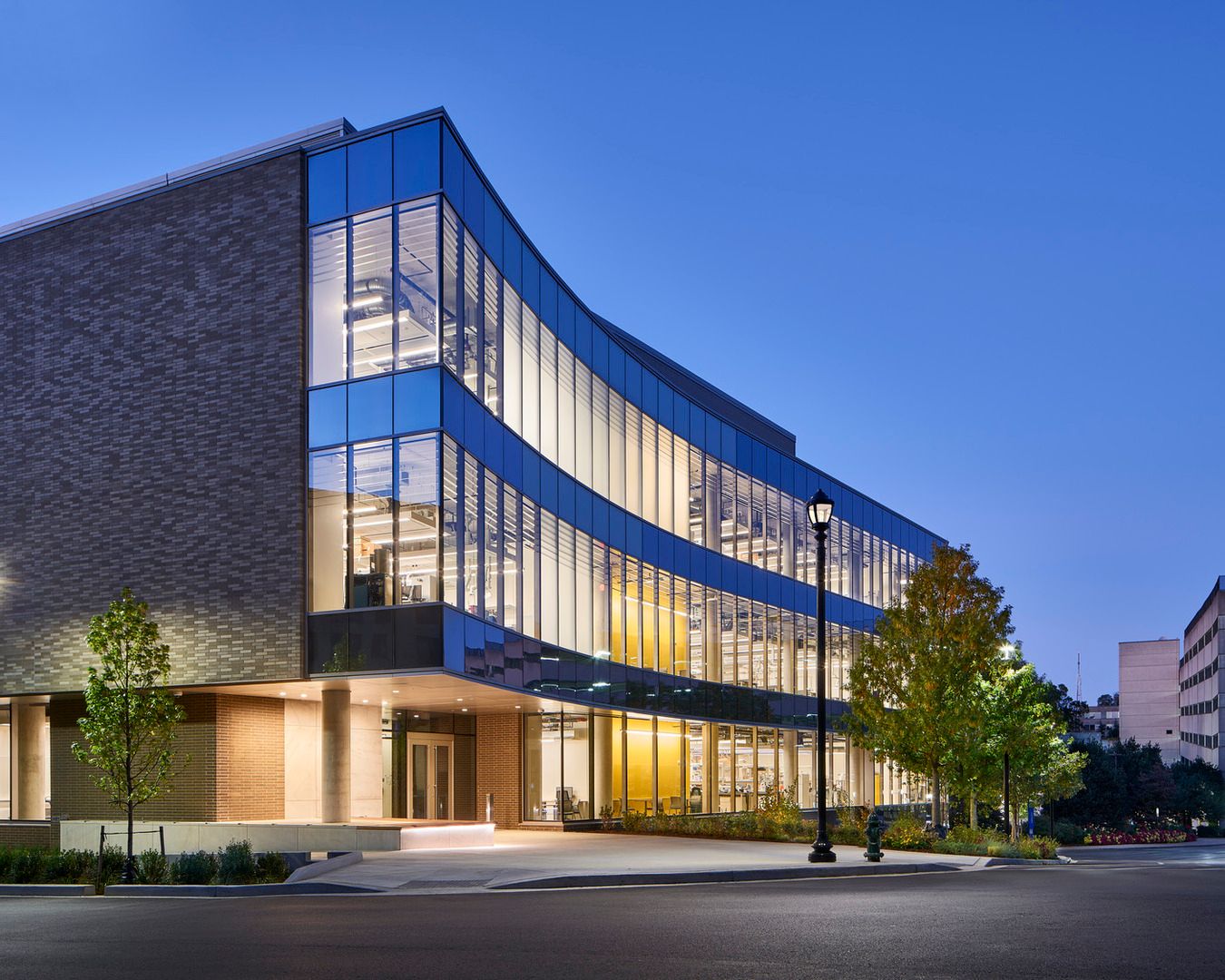
Today’s academic science and research facilities are interdisciplinary. Open, transparent design and programming approaches that put teaching, learning, discovery, and innovation on display provide inspiration, enable students and faculty to easily transition from one type of work to another, and offer ongoing opportunities for campuswide collaboration.

Accompanied by American University Professor of Biology Victoria Connaughton, PhD, Ballinger Principal Stephen M. Bartlett, AIA, LEED AP and Associate Principal Katherine Wohlsen, AIA, LEED AP recently gave a presentation at the Tradeline University Science and Engineering Facilities Conference in Austin, Texas about applying these approaches. They discussed programming and planning strategies deployed at two recently completed science buildings in the northeastern United States.
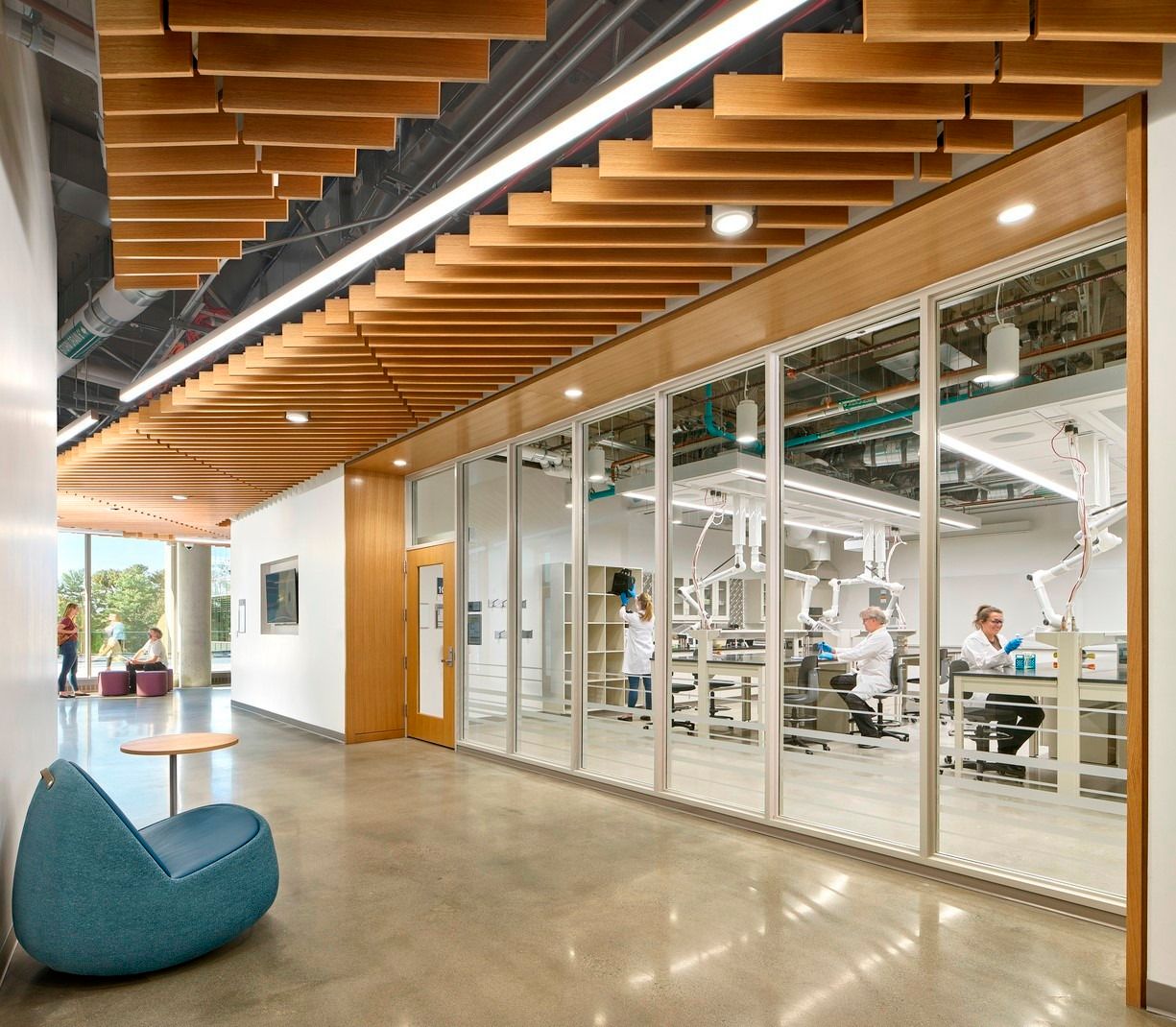
Completed in 2021, American University’s Hall of Science is a 128,000 SF, LEED Gold-certified building that unifies teaching and research, fosters interdisciplinary community, and collocates the related disciplines of biology, chemistry, environmental science, and neuroscience. At the building’s heart, a dynamic commons zig-zags through its floors, linking classrooms, labs, and offices. A virtual hive of learning, this series of active spaces encourages disciplinary cross-pollination and fosters a shared culture. With generous windows and expansive interior glazing, the commons delivers natural illumination, showcasing the research, teaching, and learning happening within. Its bright yellow marker-board walls facilitate post-class discussions and group brainstorming sessions while giving the building a distinctive identity.

Completed in 2023, Virginia Commonwealth University’s 169,000 SF, LEED Gold-anticipated STEM Building serves nearly 60% of VCU’s undergraduate students, elevates undergraduate STEM learning, and unifies the disciplines of biology, chemistry, physics, math, psychology, anthropology, forensics, and kinesiology. A hub for innovative instruction and hands-on student experiences, the building significantly expands VCU’s instructional laboratories in a bold, future-flexible, and modern setting.
Although these buildings differ in breadth of disciplines served and intensity of teaching focus, both projects reflect successful outcomes of the same basic best practices:
- Design a program that reflects the institutional culture
- Share resources to foster collaboration
- Shepherd a consistent vision
According to Steve and Katherine, it is challenging to execute these best practices without a quality faculty shepherd. “Building trust with stakeholders is integral to a successful outcome,” said Steve. Dr. Victoria Connaughton stepped into the position for American University. “I couldn’t have imagined a better ally for this project,” said Katherine.
As faculty shepherd, Victoria’s charge was to maintain transparency between the Ballinger team and the faculty, student, and staff stakeholders at American. “I took my role very seriously,” said Victoria, “The goal was to create a collaborative space and the only way that would be achieved was by engaging as many stakeholders as possible. We had framed our decision-making processes around making an excellent space for both teaching and research that met the general stakeholder needs of updated and accessible lab spaces, updated lab equipment and enough supplies, and quality study spaces for students.”

Considering the results of a recent post-occupancy evaluation survey, that goal was most certainly achieved: 90% of respondents are satisfied or very satisfied with the building.
One respondent commented:
“Cutting-edge lab facilities purpose-built for biological research take our work to the next level. Learning/teaching spaces also provide opportunities for cross-disciplinary collaboration. This state-of-the-art building enables us to conduct impactful research and bring together diverse expertise.”
Teaching labs received strong reviews: students can see science as interdisciplinary, like to study in the building, and are collaborating and able to interact with many Principal Investigators.
By contrasting two different programmatic strategies for managing growth and renewal in academic STEM buildings, the presentation highlights the essential ingredients of successful programming.
